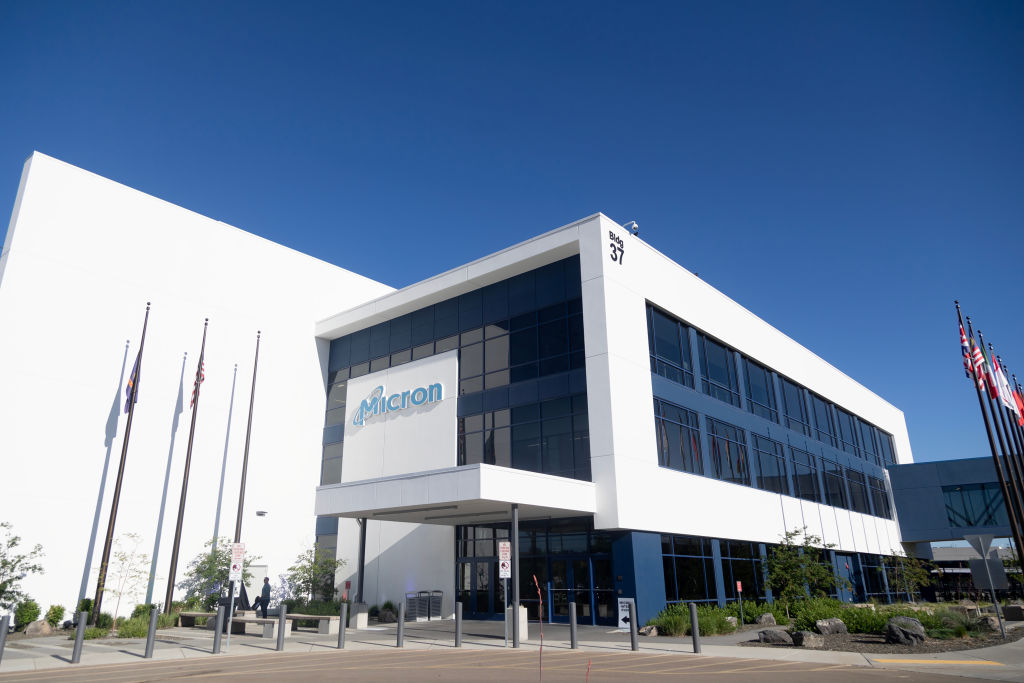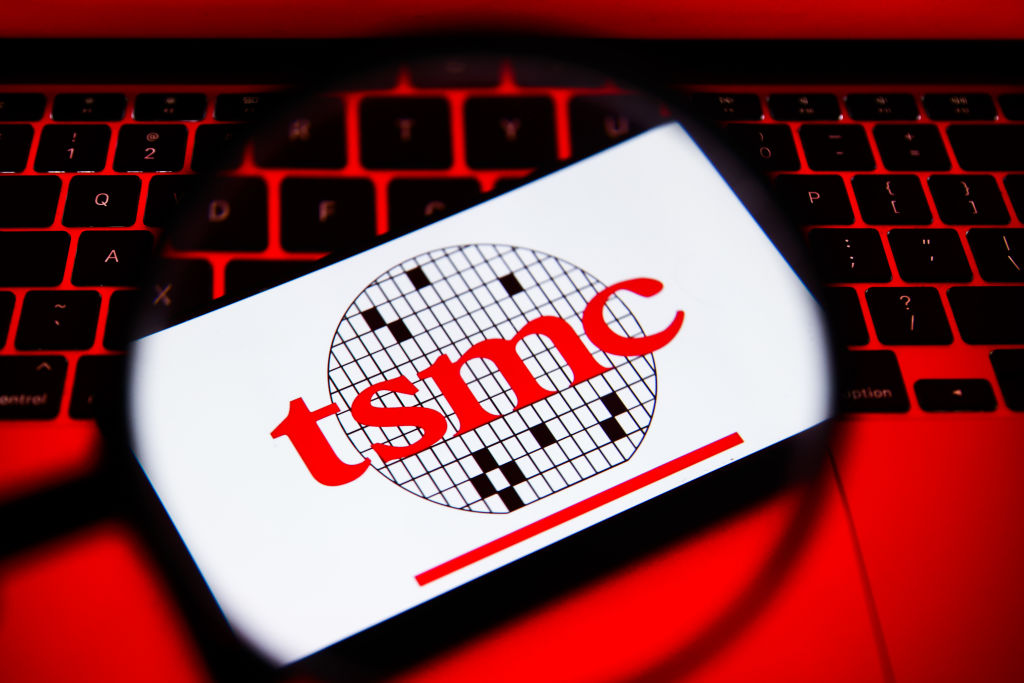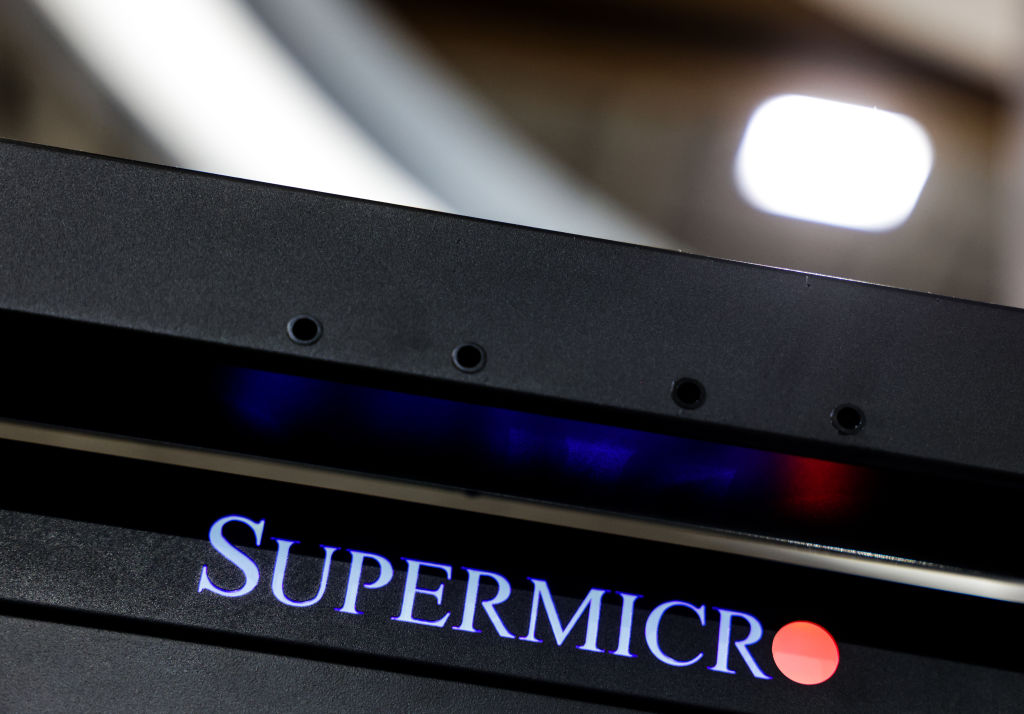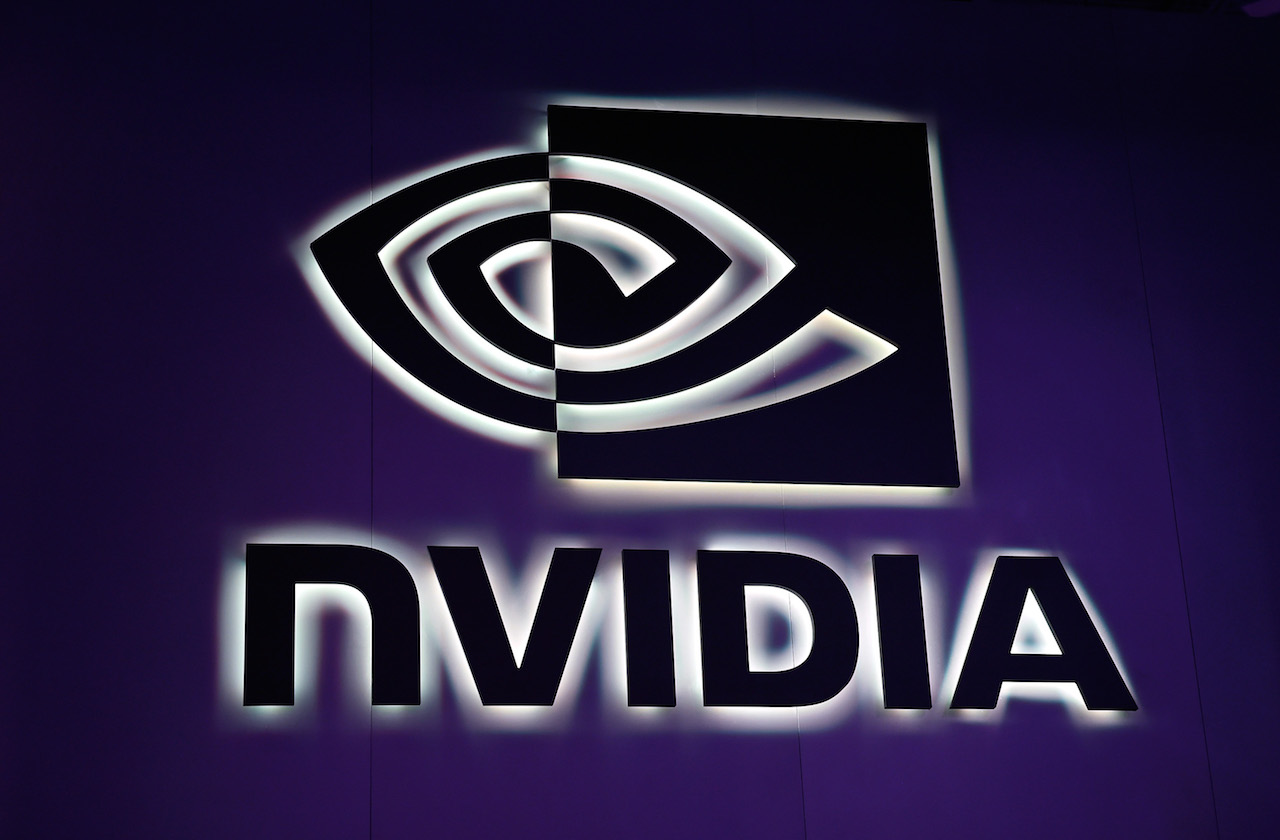The Best Semiconductor Stocks to Buy
When considering the best semiconductor stocks, there's Nvidia and then there's everyone else. Here, we look at the mega-cap chipmaker and a few of its peers.


Nvidia's (NVDA) blowout first-quarter earnings report solidified its leadership position among the best semiconductor stocks. In artificial intelligence (AI) chips, there is Nvidia and then there is everyone else.
As the company blossoms, there are a host of others riding its coattails in related businesses. Here we look at some of the publicly traded firms in the AI ecosystem whose growth is predicated on Nvidia's growth as well as growth in the AI market in general. This makes them worthy of inclusion among Wall Street's best semiconductor stocks.
The semiconductor market is highly nuanced and technical, and predicting whose technology may blossom – or wither – requires book-length treatment. So, a discourse on AI technology is not the goal here. Remember, I'm a financial guy, not a technologist.
However, it is prudent to consider semiconductor companies in terms of their financial strength. Technology matters a great deal, but so too does the financial resources to keep up with Nvidia, or best it for that matter.
With that in mind, here is a closer look at some of the best semiconductor stocks out there right now.

Broadcom
- Market value: $735.9 billion
- Dividend yield: 1.3%
Broadcom (AVGO) supplies networking chips that power ethernet switches and routers for connectivity between AI servers. As such, Broadcom is not leading the charge in AI but does compete in certain markets with Nvidia. Does it have the financial wherewithal to keep up with demand and go head-to-head in overlapping markets?
There's an important difference between Broadcom's 2023 10-K filing and fourth-quarter filing for the fiscal year ended October 29, 2023, and its first-quarter report which ended February 4, 2024: About $40 billion in new debt from its acquisition of VMware. This means Broadcom's debt-to-equity ratio has grown from 0.67 to 1.54, or more than double. However, this is not abjectly negative in terms of AVGO's financial strength. What can be unequivocally said is that AVGO has shifted from an unlevered company to a levered one, and levered companies are inherently more risky.
Because the VMware acquisition is fresh – it closed in November 2023 – I'm going to shift to look at the quarterly statements. These are not audited, but they are more recent. Notably for the first fiscal quarter, AVGO reported net income of $1.3 billion, but non-GAAP net income of $5.2 billion, a nearly four times differential.
Non-GAAP reporting is a tricky business. Is it giving investors a clearer picture of what's really happening or gilding the lily? In the case of Broadcom, the $3.7 billion difference came from the "amortization or acquisition-related intangible assets" – largely from the acquisition of VMware and stock-based compensation. Evaluating these is subjective, but category-wise, the adjustments are in the right bucket, indicating AVGO is deploying capital to acquire technology and basing compensation on earnings growth and, hopefully, its share price.
If you assume management knew during 2023 that they would be more than doubling their long-term debt in the following fiscal year, the potential impact did not seem to bother them much. For the fiscal year ended October 29, dividends and stock buybacks were $13.5 billion, in line with historical levels, but still 75% of all its cash flow from operations. AVGO has always been a dividend grower, increasing the payout from $13 in 2020 to an indicated $21 for 2024, or 12.7% average annually.
It's hard to know how management sees the landscape, whether they are giddy or whether they are terrified. But the high utilization of cash indicates confidence in their fiscal 2024 forecast which calls for revenue of $50 billion and an EBITDA (earnings before interest, taxes, depreciation and amortization) margin of 60%. At the end of fiscal 2022, the revenue forecast was $33 billion. The growth comes from the acquisition of VMware, and of course, AI-related growth.
The longer-term prospect is unknown, but what is known, come what may, it won't be Broadcom's finances that hold it back.

Micron Technology
- Market value: $156.2 billion
- Dividend yield: 0.3%
Micron Technology (MU) is on this list of the best semiconductor stocks because it is benefitting from the AI explosion through its DRAM and NAND memory chips. The more memory required for AI operations, the more DRAM modules and components that MU can sell.
From a purely financial perspective and of import to investors is whether Micron has the financial strength to ride the coattails of this market. The company has made massive investments in property plant and equipment totaling $10 billion in fiscal 2021, $12 billion in 2022, and nearly $8 billion in 2023.
Two quarters into 2024, the pace has decelerated with capital expenditures totaling $3.2 billion, or about $6.4 billion estimated annually. With $30 billion already invested, a deceleration is not unexpected. At some point, these investments pay off and diminish the need for new investments.
But that's near term. The future holds more capital expenditure for Micron. Much, much more. It has committed to spending up to $50 billion in gross capex for U.S. domestic leading-edge memory manufacturing through 2030, and a jaw-dropping commitment to spend $100 billion over the next 20-plus years to construct a new mega fab in New York.
Micron announced in April that it received $6.1 billion under the CHIPS and Science Act. In addition to questions about how Micron will finance these capital expenditures, this federal commitment also sheds light on the much-ballyhooed CHIPS and Science Act.
The $53 billion federal allocation made available by the CHIPS and Science Act is large. But if just one semiconductor company with the AI market squarely in its sights is spending twice as much, the need to bring the U.S. semiconductor market into a more competitive position is much larger than the current federal commitment.
Micron's recent financial performance makes at least one thing clear: AI or not, the company is susceptible to the wild price swings in end markets for memory products. As noted in the firm's fiscal 2023 10-K filing, "weak demand in many end markets combined with global and macroeconomic challenges and lower demand resulting from customer actions to reduce inventory levels. This led to significant reductions in average selling prices for both DRAM and NAND." And how. For fiscal 2023, revenue was halved to $15.4 billion from $30.8 billion, and earnings swung to a loss of $5.34 per share from a profit of $7.75 per share.
And there is one more wild card: geopolitics. In May 2023, the China Cyberspace Administration determined Micron products presented a cybersecurity risk and could not be sold there. China and Hong Kong represented sales of $4.9 billion in fiscal 2023, a third of total revenue for the year.

Taiwan Semiconductor Manufacturing Company
- Market value: $895.2 billion
- Dividend yield: 1.4%
Taiwan Semiconductor Manufacturing Company (TSM) may be the ultimate pick-and-shovel firm for investors looking to capitalize on the AI boom – and seeking out the best semiconductor stocks to buy. The reason: TSM is the largest contract manufacturer of semiconductors in the world. Apple (AAPL) didn't make any of the semiconductors for the more than 230 million iPhones it sold last year. They were made by Taiwan Semiconductor among others. And Nvidia doesn't make chips either. It relies on others, including TSMC to make them.
In its annual report, Taiwan Semiconductor notes the risks of customer concentration. In 2021, 2022 and 2023, 10 customers accounted for approximately 70% of its revenue. And during those same years, just one customer accounted for approximately 25% of total revenue. This is a very high concentration of risk but is assuaged by the demand for AI chips, likely from Apple or Nvidia, whose appetite seems inexorable. The risk with TSMC is whether or not it is financially strong enough to keep up with demand.
In this regard, it's difficult to doubt that TSM is making the capital expenditures to keep up with demand. From 2021 through 2023, Taiwan Semiconductor spent nearly $100 billion on property plant and equipment. For 2024 and 2025, the Value Line forecast is $35 billion and $50 billion, respectively.
It's difficult to opine on the adequacy of Taiwan Semiconductor's planned capex commitment. This is because with capital expenditures topping $100 billion over five years and demand for AI chips cited in the hundreds of billions each year, it's really anyone's guess what the ratio of industry growth to capex should be for TSMC, or for that matter, any AI-driven company.
Meanwhile, in the here and now, TSM has delivered a near-flawless financial performance. For the five years ended 2023, total earnings are up nearly threefold, sales per American depositary receipt (or ADR, which TSMC trades in on U.S. markets) have doubled, and the dividend is up 37%.
The forecast for 2024 is modest. Earnings per ADR share are forecast to arrive at $6.29 versus the $5.36 per share TSM reported for fiscal 2023. And I would expect the company to handily beat the estimate.
A check on TSMC's balance sheet shows undeniable strength. Here are some markers from the 2023 balance sheet and statement of cash flows. First, despite the massive $31 billion commitment to property, plant and equipment for 2023, cash flow from operations was nearly $41 billion. Notable in the cash flow statement is an entry for nearly $2 billion in interest – or roughly 7% of its capex – flowing from the company's cash horde of $48 billion.
Finally, and notably, Taiwan Semiconductor has, on a relative basis, very little debt. The $30 billion of bonds on its books could be easily covered by the $48 billion in the bank as cash and cash equivalents.
Also notable, TSM did not buy a single share of its own stock back last year. This is probably a good thing. In the burgeoning market for AI, Taiwan Semiconductor could quickly find itself in a position where it needs every dollar it can get.

Super Micro Computer
- Market value: $49.4 billion
- Dividend yield: N/A
Super Micro Computer (SMCI) makes servers that support AI and is a leading vendor for Nvidia. The company's fortunes have skyrocketed in lockstep with Nvidia, making it one of the best semiconductor stocks. From 2018 to 2023, five years, earnings per share have grown from 89 cents to $11.43.
This is a good and provocative result, since during the same five-year period, sales have "merely" doubled to just over $7 billion, with the number of outstanding shares remaining more or less constant.
The improvement to the bottom line in excess of the increase in sales is attributable to improvement in the gross margin (sales less cost of sales; i.e., materials and manufacturing expenses) and the operating margin (gross profit, less operating expenses). From fiscal 2022, which ended June 30, 2022, SMCI's gross margin was 15%, but 18% in fiscal 2023. Similarly, the operating margin has improved from 3.3% to 10.7%.
These margins have largely held for the nine months ended March 31, 2024, suggesting, for now, that margin improvement is not going to drive earnings. Gross margin improvement may prove elusive because it contains, among other things, materials that get priced in markets over which SMCI has little control. The same can be said for manufacturing operations that rely on a supply chain and contract manufacturers.
One noteworthy item on the income statement is the decrease in research and development, from 6.3% of sales in fiscal 2021 to 4.3% in fiscal 2023. The company notes in its 10-K filing that "our research and development expenditures, as a percentage of our net sales, are considerably higher than many of our competitors." As revenue has grown, the dollar amount of research and development has increased. By comparison, however, Taiwan Semiconductor spent 8% of revenue on R&D in 2023 and Nvidia spent more than 14% of revenue on R&D.
Of note for SMCI, is the statement of cash flows for the nine months ending March 31, 2024. The company spent $2.6 billion building inventory and increased accounts receivable by another half a billion dollars. These items when netted against sources of cash resulted in negative cash flow from operations of $1.8 billion. While negative cash flow from operations is a rarity, it should be noted that this is a happy problem to have when it's brought on by revenue acceleration.
SMCI financed the deficit by issuing more stock and selling bonds that will be converted to stock. This seems somewhat clunky since issuing equity is generally considered the most expensive form of financing. Further one of the effects of this is it increases the number of shares outstanding and reduces the earnings per share. However, this may have been a bid by SMCI to grow the number of shares in its public float and attract larger shareholders who need more stock in the market to build a position that is material to the portfolio.
SMCI has about 60 million shares outstanding. By contrast, Taiwan Semiconductor has 5.2 billion.

Nvidia
- Market value: $3.1 trillion
- Dividend yield: 0.03%
At this point, it's worth looking at the source of all the froth in Nvidia (NVDA), considered one of Wall Street's best semiconductor stocks. Over the last three years, revenue and earnings per share have grown substantially. The top line, for instance, jumped to $60.9 billion in fiscal 2024 (ended January 28, 2024) from $26.9 billion in fiscal 2022. The bottom line, meanwhile surged to $12.05 per share from $3.91 per share in the same time frame.
The increase in the earnings per share would and should have been higher, but income tax swung from an addition to income of $187 million in fiscal 2023 to a $4.1 billion expense in fiscal 2024.
What's notable in this performance is the improvement in the company's net margin, or total earnings divided by total sales. NVDA has grown its net margin from 36% in fiscal 2022 to 49% in fiscal 2024. The gain is attributable to improvement in the gross margin – sales divided by the cost of sales – and the operating margin, which is sales divided by operating expenses. In terms of lowering its cost of sales, the company reports, somewhat opaquely: "Our overall gross margin increased to 72.7% in fiscal year 2024 from 56.9% in fiscal year 2023. The year-over-year increase was primarily due to strong Data Center revenue growth of 217% and lower net inventory provisions as a percentage of revenue."
The improvement in the operating margin is attributable to halving its R&D and selling, general and administrative expenses as a percent of revenue. The research and development commitment is still large at $8.7 billion, or 14.2% of revenue.
NVDA's balance sheet shows undeniable strength. Long-term debt is just $8.5 billion, which is less than a third of the $26 billion in cash and cash equivalents at the beginning of fiscal 2024. It's also just 20% of shareholder equity of $43 billion, indicating Nvidia has plenty of dry power to access more capital.
Further, the capital expenditures last fiscal year of $18.2 billion could have been handily covered by $28 billion in cash flow from operations. The company repurchases shares, $9.5 billion in 2023, which is a large commitment in absolute terms, but when compared to a market cap of $3 trillion, a drop in the bucket.
Investors considering whether now is the time to hop on the bandwagon should keep in mind that with a trailing 12-month price-to-earnings (P/E) ratio of 70 times, NVDA is priced for perfection. And the semiconductor market and the world of AI are far from perfect.
Related content
Get Kiplinger Today newsletter — free
Profit and prosper with the best of Kiplinger's advice on investing, taxes, retirement, personal finance and much more. Delivered daily. Enter your email in the box and click Sign Me Up.

-
 Financial Security vs Financial Freedom: What's the Difference?
Financial Security vs Financial Freedom: What's the Difference?Having the ability to pivot without worrying about financial support is where financial security becomes financial freedom.
By Justin Donald Published
-
 Retired and Worried About a Recession? Six Ways to Prepare
Retired and Worried About a Recession? Six Ways to PrepareRetirees can plan for a near-term recession with a range of strategies, from small investment changes to significant lifestyle hacks.
By Maurie Backman Published
-
 Going Through Probate? How to Find the Right Attorney
Going Through Probate? How to Find the Right AttorneyJust having the skills and experience to do the job isn't enough. The probate attorney you hire needs to have the right temperament for your particular case.
By John R. Silva, Esq. Published
-
 Widow's Penalty: Three Ways to Protect Your Finances
Widow's Penalty: Three Ways to Protect Your FinancesHigher Medicare premiums, smaller Social Security payments, bigger tax bills … Financial changes can hit hard when a spouse dies. How to counter the blow.
By Ashley Terrell, IAR Published
-
 Four Ways Your Phone Can Help You Weather Market Volatility
Four Ways Your Phone Can Help You Weather Market VolatilitySmartphone apps can help investors make healthy decisions and maintain a disciplined investment approach — even when emotions try to steer them off course.
By Marco De Freitas Published
-
 Stock Market Today: Tariff Pause Triggers 3,000-Point Dow Rally
Stock Market Today: Tariff Pause Triggers 3,000-Point Dow RallyThe bond market is sending concerning signals as the Trump administration executes its rapid reordering of global trade relationships.
By David Dittman Published
-
 Stick to the Plan: Don't Panic During Economic Uncertainty
Stick to the Plan: Don't Panic During Economic UncertaintyTake a breath and step back. Focus on a solid fiscal foundation to stabilize your investments during stock market volatility.
By Eric Lahaie, CFS®, RICP® Published
-
 How Inflation Affects Your Finances and How to Stay Ahead
How Inflation Affects Your Finances and How to Stay AheadThe cost of goods and services is certain to rise over time, making it essential to have a financial plan that will help you keep pace.
By Kyle D. Sikes Published
-
 Now's a Great Time to Become a Financial Adviser: Here's Why
Now's a Great Time to Become a Financial Adviser: Here's WhyThere's a growing need for financial advisers. Why not take on a role that offers earning potential and work-life balance and helps change lives?
By John Roberts Published
-
 Stock Market Today: Tariff Talks Drive Another Up-and-Down Day
Stock Market Today: Tariff Talks Drive Another Up-and-Down DayTrade war negotiations are happening, but the "fear gauge" is gyrating, and investors, traders and speculators are still searching for signs of a bottom.
By David Dittman Published
